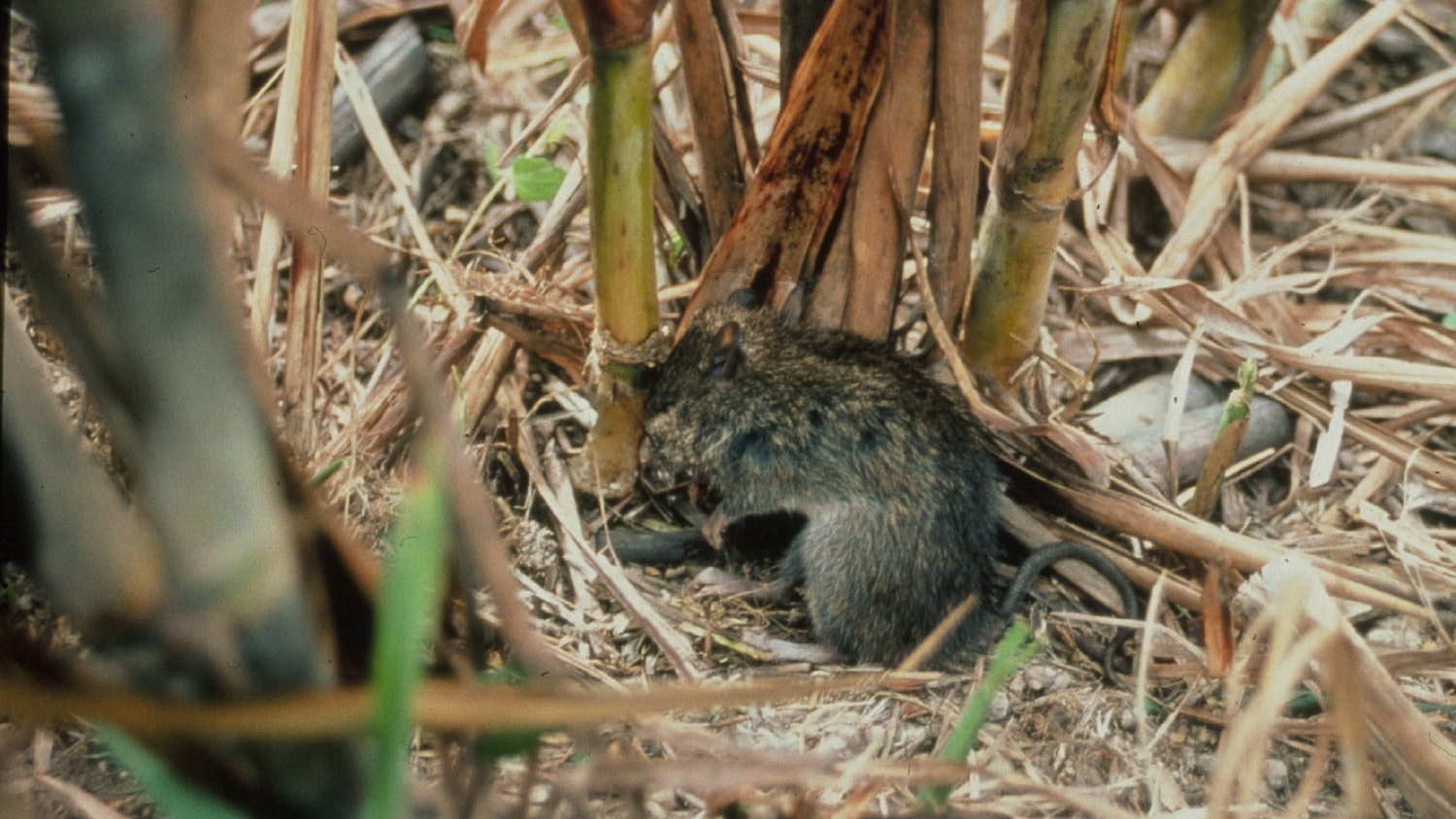NWRC Research Areas: Invasive Species on Islands

Our scientists develop safe and effective methods and strategies to manage the effects of invasive species to agriculture, natural resources, and human health and safety in island ecosystems.
Rats have significant agricultural, natural resource, and human health impacts in the Hawaiian Islands. Where they are used, current control techniques provide inconsistent levels of protection from rodent damage, and more effective methods for control are needed. Recognizing this need, Congress directed the establishment of a research project in cooperation with the Hawaii Agricultural Research Center.
This project, by investigating a wider variety of methods to resolve small mammal damage to agriculture, reforestation, structures & equipment, also fulfills one of the USDA-APHIS-Wildlife Services program research needs identified in a research needs assessment. Project staff will collaborate with other state and federal agencies and private organizations to develop techniques to control rodents and other vertebrate species in natural areas. Research efforts covered by this project document will address, when appropriate, the parallel vertebrate pest control needs of the Hawaiian agriculture industry and the conservation community.
Field studies are conducted on the biology of rats in macadamia orchards with the ultimate goal of developing an ecologically sound and cost-effective integrated pest management plan for these pests in this crop. Additionally, due to rapid diversification in Hawaiian agriculture, there is a need to assess economic impacts of rat damage to new crops. Similarly, assessment of recently introduced vertebrate pest populations and their impacts may also be needed.
Project Goal and Objectives
Methods and Strategies to Manage Invasive Species Impacts to Agriculture, Natural Resources, and Human Health and Safety
Goal: Develop safe and effective methods and strategies to manage the effects of invasive species to agriculture, natural resources, and human health and safety in island ecosystems.
Objectives:
- Develop and evaluate rodenticides (diphacinone, chlorophacinone and brodifacoum) for use in native conservation areas, island eradications, and agricultural crops (seed crops and tropical fruits).
- Develop and evaluate methods to address bird damage in agriculture and bird strike hazards at airports.
- Conduct research in basic wildlife biology and ecology to develop and enhance wildlife control methods for invasive mammals.
- Identify, develop and evaluate chemical methods to control invasive amphibians and reptiles.
- Evaluate effects and develop methods to control invasive brown treesnakes.
- Provide service assistance to stakeholders through consultations.
Publications
Contact Us
Invasive Species on Islands
Steven Hess, Project Leader
Email: Steven.Hess@usda.gov
Phone: 808-932-4750
Hawaii Field Station
P.O. Box 10880
Hilo, HI 96721

